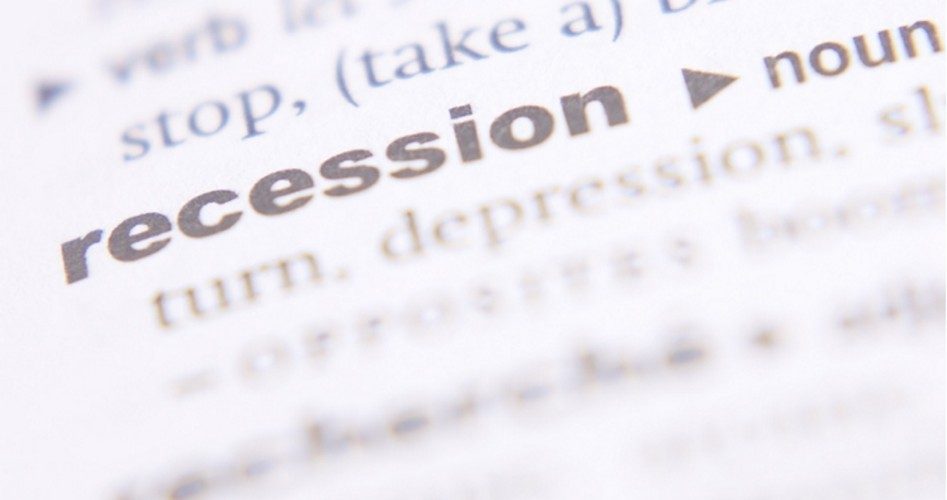
Whenever new data on the economy is reported, the Atlanta branch of the Federal Reserve System (the Atlanta “Fed”) releases its proprietary “nowcast” on how well the economy is doing. For some time now, that forecast has embarrassed mainstream economists who have subsequently been forced to drop their own forecasts as the economy continues to slow.
In February GDPNow projected that the U.S. economy would grow by 1.9 percent in 2015, far below the rosy estimates by mainstream economists. Two weeks ago GDPNow projected growth at 1.2 percent. On May 13, it dropped further, to just 0.7 percent.
Instead of a “backward” looking view, the Atlanta Fed’s indicator looks through the front window of the economy, noting 13 separate parts of the economy and updating them every week. As Patrick Higgins of the Atlanta Fed pointed out, the indicator’s record is very good: “The GDPNow model forecasts GDP growth by aggregating 13 subcomponents.… [Its] forecasts are found to be more accurate than a number of statistical benchmarks since 2000.”
It also is calling into question the rosy projections made by the Philadelphia Fed in February and by economists polled by the Wall Street Journal last week. The Philadelphia Fed put GDP estimates for the first quarter at a 3 percent annual rate and 3.2 percent for all of 2015. Sixty-two economists polled by the Journal have made projections of 2.8 percent annualized growth in the second quarter and 3 percent for all of 2015.
With all the first-quarter data in, the economy actually went negative. But economists were quick to defend their wildly optimistic predictions: It was the weather, it was the West Coast port shutdowns, it was reluctance of consumers to spend and investors to start new businesses. It will all work, goes the narrative, just like it did in 2014 when the first quarter went negative but ended up the year slightly positive.
They grasp at the thinnest of straws: Restaurant and bar sales are up, boding well, they say, for a rebound in retail sales. Unfortunately those sales continued to decline long after the weather warmed up and the West Coast ports resumed full operations. Stuart Hoffman of PNC Financial Services, was doggedly optimistic: “The April spending numbers will look better once we get information on services. That’s where consumers are spending their money, and the April increase in restaurant sales points to greater demand for services overall.”
Michael Moran of Daiwa Capital Markets also hopes for the best: “Solid job growth and low energy prices could stir spending,” while Gregory Daco of Oxford Economics said that “the drag [of the strong dollar and lower energy prices] will be less in the second half.” Kiplinger’s David Payne used the same language of “could,” “will be,” “will look better,” and “points to” offered by his peers:
The economy is sure to pick up steam in coming months, improving to 2.6 percent to 3 percent for the year as a whole.… A slow start last year was followed by a strong rebound.
Continuing job gains and growth in consumer incomes will spur purchases of homes, cars and other products and services. Lower gasoline prices are also putting more money into consumers’ pockets, helping to fuel consumer outlays in the months to come.
The housing market is also in for a solid year, propelled by job growth and income gains plus an increase in household formations and pent-up demand.
The only trouble with such Pollyanna views is the stark reality of an economy that is slowing, not growing:
• Consumer confidence indexes are below any economist’s prediction.
• The Empire State Manufacturing Index is weaker than expected.
• Industrial production has declined for five months in a row.
• Retail sales numbers continue to disappoint.
• Household spending growth expectations have plunged.
There’s one more bit that few are taking into account: The present so-called recovery from the Great Recession is getting long in the tooth. The average time between recessions is six years. The Great Recession ended, according to the National Bureau of Economic Research (NBER), in June 2009. That was six years and one month ago.
If GDPNow continues its streak of calling for much slower growth, more of those rosy predictions by mainstream economists are likely going to have to be reduced once again.
A graduate of an Ivy League school and a former investment advisor, Bob is a regular contributor to The New American magazine and blogs frequently at www.LightFromTheRight.com, primarily on economics and politics.
Related article:
Do Negative Interest Rates Portend a Negative Economy?



